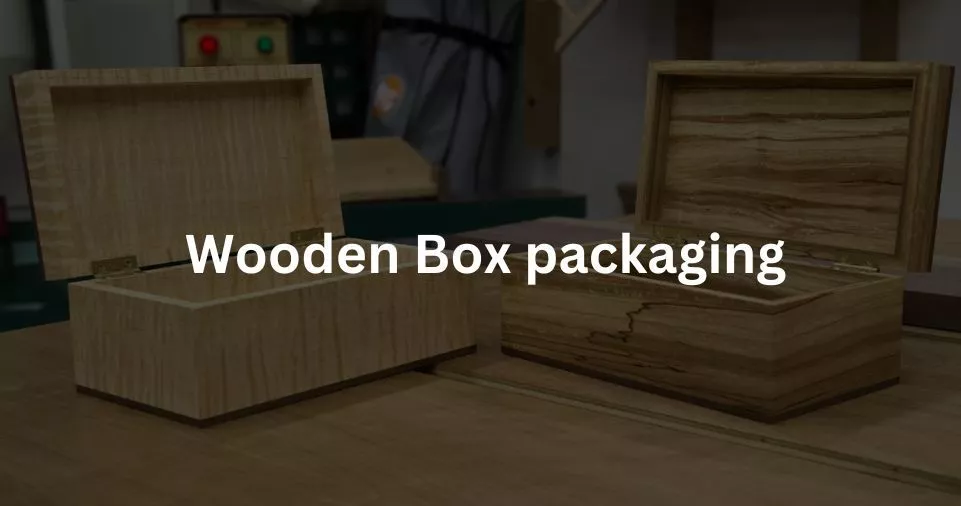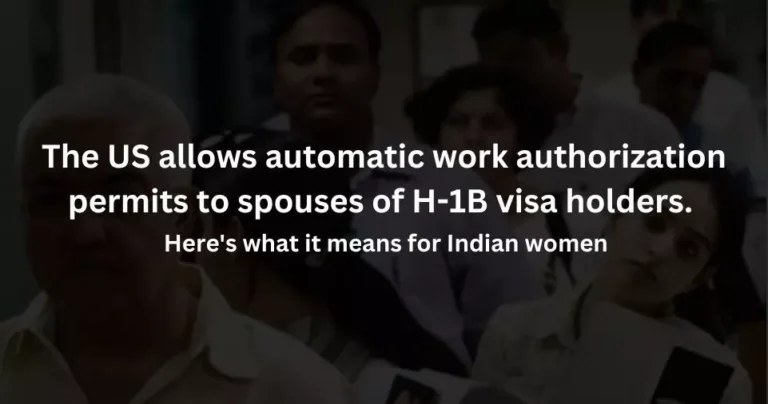Boxed Packaged Goods: 6 Types of Boxes, Tips you need to Know, and More
Everyone has witnessed the recent growth in the market for packaged items in boxes. Boxed packaging items have been essential to the trend of online buying and delivery as it has grown. After all, this market as a whole is dependent on these.
The term “boxed packaged goods” refers to things that are packaged in boxes. This protects the products being sent during transportation, especially the more delicate ones. It is crucial to read this post if you run or are even considering starting an online business that focuses on providing delivery to consumers’ doors. This article walks you through numerous packing box types as well as the methods that are employed.
Types of boxes for packaging that e-commerce retailers must consider
The choice of packaging for boxed packaged items is sometimes a very difficult one for eCommerce sellers. These packaging come in many different varieties, therefore it’s crucial to pick the proper one to cover and safeguard the goods.
The store may receive negative feedback or possibly suffer financial loss if the goods are not delivered to the consumer in the proper circumstances. Ecommerce businesses must know what sort of packaging to employ as a result.
The many types of packaging from which online sellers can select their products are discussed below. the following types of boxes and packaging will be examined:
- Plastic box packaging
- Wooden box packaging
- Cardboard box packaging
- Rigid box packaging
- Corrugated box packaging
- Paperboard box packaging
Plastic Box packaging
- Plastic boxes are constructed of PVC, PET, PP, and PS. These are available in several forms and patterns. These containers often come in clear varieties with a variety of shapes, including purse, cylindrical, foldable, etc.
- These boxes have graphics put on them to make them seem lovely and appealing. On occasion, the box will additionally have information etched on it.
- Plastic boxes provide several advantages, including high toughness, moisture resistance, water resistance, and portability.
- If we are talking about the benefits of plastic box packing, then these are low-density, lightweight, and simple to process.
- Plastic boxes are typically used by food firms to package their products. Plastic bottles are also available for water and iced beverages.
- Delivering your boxed packed items in plastic boxes helps safeguard the safety of your product if you sell food, stationery, or cosmetics.
Wooden Box packaging

- When it comes to packing and shipping expensive and high-quality goods like pottery, wine, and health care items, eCommerce retailers have the finest choice in wooden box packaging.
- The aesthetic of wooden box packing is very opulent and sophisticated. To prevent the objects from impact, materials like foam, paper, or sponge are sometimes inserted inside as liners.
- Wooden boxes provide excellent protection since they can withstand practically any weather condition.
- Additionally, as multiple boxes may be stacked on top of one another, they also take up less room.
- Logs are not frequently utilized by manufacturers of the timber boxes seen in boxed packaged items. Instead, plywood and other medium-density woods are used to build the boxes. These demonstrate themselves to be excellent packing materials while also being cost-effective.
Cardboard Box packaging
- This type of packaging is perhaps the one that is most frequently used for boxed packaged items.
- Several layers of paper are stacked on top of one another to create cardboard. These boxes are adaptable and versatile. They are lightweight and simple to ship.
- Additionally, cardboard boxes have advantages from a design standpoint. Because it is so simple to print something on these boxes, branding with their aid becomes quite suitable. The majority of online merchants employ cardboard box packing since it makes it simple for them to market their goods.
- Because they are so easily recyclable, these boxes are also a green choice.
- These boxes cannot be used to pack large items since doing so might harm the packing.
Rigid Box packaging
- You could have thought of this as fancy wrapping or a special gift box.
- Fixed paper boxes known as rigid boxes are produced using a highly advanced manufacturing method.
- These are created from a variety of materials, and hand fabrication is the main technique employed.
- Due to the lengthy production process for these boxes, both the price and quality are more than average.
- Because of their superior quality, these boxes are referred to as “gift boxes” or “hardcover boxes.”
- For the delivery of boxed packed items, eCommerce sellers of jewelry, cosmetics, and technology employ rigid box packing.
Corrugated Box packaging
- These are composed of hollow-structured corrugated cardboard. Making these cardboards involves the molding procedure.
- Single-corrugated, double-corrugated, and triple-corrugated cardboard are some of the varieties of cardboard that are used.
- The weight of this cardboard might reach 3000 kg when used on a wide basis.
- Corrugated boxes are used in a variety of applications, including the packing of fruits, ceramics, pharmaceuticals, and major home equipment like refrigerators, air conditioners, coolers, etc.
- Since these boxes can accommodate a variety of product sizes and are relatively less expensive, many eCommerce companies utilize them to offer their boxed packaged items.
Paperboard box packaging
- This is the area for anyone who deals in food packing or wishes to pack food for a vacation or a picnic.
- Paperboard boxes are made of high-density paper and are typically used to package food.
- These are lightweight and convenient to carry. These are also readily stackable one above the other.
- Many large-scale food establishments, including some franchises, wrap their food goods in paperboard boxes.
- This is a fantastic method for bringing dry, light meals. Additionally, this provides a sustainable solution for food packing.
Tips you need to know before packing a product; for increasing your sales

Make it unique
Making your packaging stand out or be visually appealing doesn’t require you to purchase pricey packaging materials for your boxed packed items.
Just a little bit of creativity with the packaging is required. Make the outside a little bit distinct from the norm in terms of texture and patterns. Make an effort to make things straightforward.
Know whom you’re delivering to
Knowing your target market is crucial if you’re a retailer. Knowing who your target market is will make it simpler for you to design the packaging in a way that appeals to them. Customers’ needs and interests are always given first consideration by a great shop.
Being successful in such a cutthroat business is very simple if you are aware of your target market.
You may also like reading: Food Trucks That Accept EBT Near Me
The Unboxing matters
The unpacking is the most important aspect of packaging. If a consumer begins unwrapping a product and runs through too many issues during that procedure alone, he may soon get disinterested in it. This might harm your reputation as a retailer.
Make the unwrapping process enjoyable and unexpected. If you provide a small, surprise within the packing, it will benefit you. This might be as straightforward as sending the consumer a card complimenting them on their excellent purchase.
Additionally, make unpacking as simple as possible.
Go eco friendly
Nowadays, a large number of individuals choose eco-friendly products. Your boxed packed items will benefit if you make your packaging appear eco-friendly.
Make use of recyclable or recycled materials. If your packaging has a significant negative influence on the environment, your chances of success in the market increase.
Search the designs
Retailers haven’t paid much attention to the packaging they utilize in previous years. They recently delivered the item. Retailers now seek out numerous design concepts for their boxed packed items, however, as the market has grown more attractive and exterior appearance has begun to draw buyers.
Your goods will undoubtedly be checked out by the buyer if the packaging design is intriguing. This raises his likelihood of purchasing the item as well. So, keep an eye out for such design concepts and incorporate them into your package.
How to pack the product for shipping: things you should keep in mind
Now that you’ve looked at the many kinds of packaging boxes that are available and some suggestions on how to adapt them. Before delivering your boxed packaged products, there are a few procedures you need to take, and you need to be aware of bagged packaged goods.
Below are some packing suggestions that will make sure your product is protected throughout transport and stays in good shape.
- Consider the product’s specifications and select the appropriate packing material: Selecting the right packing material for your goods is of utmost importance. This doesn’t make sense if you’re using rigid box packing for a hefty product. Additionally, as we just saw, environmental considerations are important. Making the appropriate decision while selecting the packing material is crucial.
- The product’s size and shape: If you’re using a box as packing, make sure there is enough room for the product to fit inside. You’ll also need cushioning material to protect it from harm after the item fits it.
- How fragile is your product? It’s critical to consider both the product’s worth and its brittleness. It is crucial to provide sufficient cushioning for boxed packed items to prevent damage during transit.
- Do the individual wrapping: Make sure to wrap each item separately if you’re packaging more than one thing inside of a box. To keep them from crashing into one another, the box must also include cushioning dividers.
- Seal the box correctly: To keep moisture out, the box must be properly sealed. For packing, use the appropriate width of the tape. Avoid using straps or strings since they won’t be able to support the hefty weight without damaging the heavy items.
Levels of Packaging: Primary, secondary, and tertiary
Primary packaging
‘Consumer packaging’ or retail packaging’ are other names for this. Direct contact between this kind of packaging and the product exists. For instance, if you purchase a cold beverage that is housed in a steel can, the can serves as the drink’s primary container.
The primary package is where you put the name, logo, and product details of your business. Here, significant designing might be used to make the product appear profitable.
Secondary packaging
This serves as a stock holding unit and is separate from primary packaging. For further transportation, bundles of goods are typically packaged together in cardboard or plastic packaging. It is referred to as secondary packing.
The brand name or logo of your business is often not advertised on secondary packaging, however, some merchants do utilize secondary packaging to achieve this. The secondary package is printed with the company’s name and logo.
Tertiary packaging
This packaging is for the transportation stage. A large iron container is an illustration of tertiary packing, in which the product is packaged inside secondary packaging before being stacked and prepared for shipment.
Most secondary packaging does not feature your company’s name or logo, however, some major corporations have their containers that they utilize for advertising. Tertiary packaging typically includes the logo or name of the coordinating shipping provider.
Conclusion:
In conclusion, boxed packaged items are essential to supply chain management and logistics. For firms in diverse industries, they provide comfort, safety, and branding possibilities. You can choose the best packaging for your items by being aware of the many sorts of boxes that are available. To guarantee that your items are secure and aesthetically pleasing, keep in mind to take into account aspects like size, material, and design.
In this essay, I’ve provided helpful insights and advice on boxed packaged items as a content writing professional and SEO expert. To provide your readers with a satisfying reading experience, you must maintain consistency in your material, both in terms of language and style. When using sentiments and emotions in your writing, keep in mind to achieve a balance and stay away from overusing particular words or patterns.
FAQs:
Q: What are the advantages of using boxed packaged goods?
Boxed packed items provide several benefits, including enhanced consumer satisfaction, protection for your products during transit, ease of handling and storage, and branding potential.
Q: Which type of box is best for fragile items?
It is advised to use corrugated boxes with the proper padding when transporting fragile objects. These boxes guarantee the secure delivery of your fragile items and offer great shock absorption.
Q: How can I choose the right box size for my products?
Take precise measurements of your product’s dimensions to pick the proper box size. Avoid using too big boxes as they may result in needless shipping expenses and greater environmental effects. Instead, consider allowing some extra room for protective items.
Q: Is it necessary to customize the design of boxed packaged goods?
Customization is not required, but it may have a big influence on your branding efforts. Your logo, company colors, and other design aspects may be included in personalized boxes to increase brand recognition and customer loyalty.
Q: How can I optimize my boxed packaged goods for e-commerce?
Give durability and protection priority when packing items for e-commerce. To further improve the consumer experience, think about including features like simple opening and resealing choices. Make sure your packing is designed for effective delivery and that it complies with the weight and dimension limitations imposed by shipping companies.
Q: Can I use environmentally friendly materials for boxed packaged goods?
It is a responsible decision to use ecologically friendly materials for boxed packaged items. Consider alternatives like compostable or recyclable materials, biodegradable packaging, or even ecological choices like mushroom packaging.






